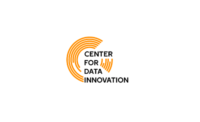Artificial intelligence agents can provide automation for certain tasks freeing up engineers to perform higher-value jobs. Engineers are using artificial intelligence on a variety of projects as a means to eliminate mistakes caused by human error, helping them become more efficient.
Engineers using AI with minimal human interference are benefiting from this technology in the design and business phases of a project.
“The blend of AI and human oversight makes us better and keeps us from making mistakes,” said Zane Pucylowski, president and principal engineer at Phoenix Engineering and Consulting Inc. On the other hand, as humans, we are making the computer better because we can fine tune the software helping us get better results during the computing process.”
Artificial Intelligence in the Design Process
Artificial intelligence is far from perfect, but it does help eliminate many of the mistakes caused by human error in the engineering design processes.
“There’s two phases,” Pucylowski said. “One is the elimination of human error and that is done once you tell the AI to do something in a certain order it is going to do it from now on. It doesn’t matter if it’s tired, gets distracted, or got called into a meeting. It can stay on point and do those steps in order.”
Eliminating human mistakes is the first area where AI is benefitting engineers but it also helps in cutting down the number of man hours on a project.
“The AI is capable to do so many more iterations than a human can do in a certain amount of time,” Pucylowski said. “This is one of those things where we can set it up and let it run overnight and the results will be ready for us the next morning. This way we have zero engineering staff hours in the result and that makes us better and more efficient.”
Anytime you insert a human into a situation there is always a chance for mistakes to be made. Using artificial intelligence in these design processes takes out the human element from this phase of the project.
“Being able to eliminate a human from doing all of the steps in the design stage in a perfect order over and over again for hundreds of iterations stops the mistakes,” Pucylowski said. “A human cannot do the same job as the AI creating hundreds of designs without making a mistake and without having someone come behind them and check over it and then that involves having 2 humans instead of 0.”
Artificial Intelligence in the Business Process
Artificial intelligence algorithms are helping engineers better serve clients during the initial proposal portion of a project. The AI creates new designs and implements work from projects the firm has done in the past.
“We’re trying to create an almost Watson-style algorithm that will help figure out what the client is asking for rather than automatically showing us what we have done similarly in the past as a base point,” Pucylowski said.
The algorithm helps engineers get to a solution quicker when seeing where a design process has been implemented before in another project.
“If a customer asks for something in construction or something on roof panels, the algorithm will point us almost immediately to some prior work we have done,” he said. “We’re using it as a way to shortcut and save the engineering time of trying to map an old project to a new project.”
How Artificial Intelligence is Used in Engineering
Whereas the first step of using AI in these processes is matching the pattern of design elements, the second area is the design optimization aspect of the project.
Jay Strickland, Developer with Heliopath Labs, said the new artificial intelligence allows engineers to generate many different solutions to project designs.
“A good example of this is Fusion 360 generative design AI,” Strickland said. “It’s an Autodesk product and basically what it does is it takes the inputs you have selected, such as weight criteria, budget, materials, and strength of connection points, and it will give you a bunch of different designs that meet your criteria.”
The artificial intelligence creates thousands of designs in the background while it is running. Once finished the agent will give the engineer its best designs fitting the different parameters for the project. One design may be based on the aesthetics while another may be based on the strength of the material. The best design is then chosen by the lead engineer on the project. The design can also be sent to a 3D printer to create a scale model.
“Using artificial intelligence in this process allows us to look at a project through a completely new lens,” Strickland said. “Solutions we wouldn’t have imagined at all we can now take and modify and choose the right one for the job at hand.”
The AI agent allows for less human interaction during the design optimization phase and eliminates mistakes from happening. Using artificial intelligence also frees up time for engineers to work on other projects.
“Instead of doing all of the grunt work on the design, now the work only involves looking at the designs the computer puts out and deciding what the possibilities are within that design,” Strickland said. “Then the engineer can choose which one will best suit the project.”
Human Interaction with Artificial Intelligence
Artificial intelligence agents help engineers save time and eliminate mistakes, but it doesn’t eliminate the human element all together. A human is still needed to make sure the AI is working correctly and to make the final decision on the design.
“There’s a spot where you need to put in a human to make the final decision to make sure things aren’t running amuck and aren’t providing you with some result you didn’t expect,” Pucylowski said. “For example, if you tell the AI to make the design as cheap as possible, it may determine an electrical circuit that is the cheapest but would not be the safest. In an accident, that design might have burned the building to the ground. The human filter is there to catch those kinds of errors.”
No matter how intelligent and advanced AI gets in the future there will always be a human involved to make sure everything is running smoothly.
“The blend of AI and engineers makes us better and keeps us from making mistakes and humans make the computer better because they keep it from creating rogue results,” Pucylowski said. “We’re always going to have a human at the end to make sure the final result is what we wanted, and we don’t have some unknown intention created by the AI.”





